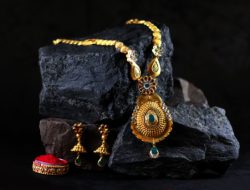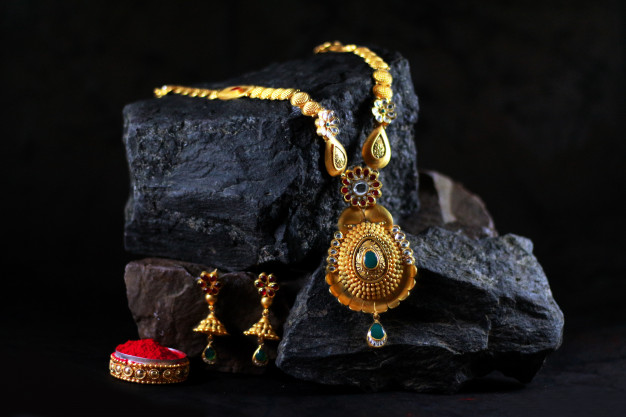AI Paradigm Shift in the Jewelry Industry – New York City Founder of J’EVAR ALTR Creates Diamonds, Entrepreneurs and the Third Generation of Diamonds. The jewelry industry is undergoing a major transformation as it embraces the limitless possibilities offered by artificial intelligence (AI) technology in jewelry.
AI Paradigm Shift in the Jewelry Industry

swarovskijewelry – These changes in the industry impact sustainability, innovation in jewelry design, focus on renewable energy, and the overall customer experience. Based on my experience using AI tools at my company, I looked for ways to harness the power of AI algorithms that enable these advancements.
The role of AI in jewelry design
Integrating parametric AI-based tools enables jewelers to investigate new possibilities, create innovative designs and push the boundaries of creativity. One of Design AI’s main advantages in the jewelry design process is its ability to analyze large amounts of data and predict new trends with incredible accuracy. Using artificial intelligence algorithms, designers can adapt jewelry design concepts to specific target audiences by understanding shopper preferences, buying habits and future customer trends. This level of customization can help ensure that the jewelry design is right for the customer, thereby improving the customer’s overall creation and ownership experience.
AI-based parametric tools also allow designers to explore complex and complex designs that were previously considered impractical or ad hoc. to consume to consume For example, with 3-D printing, jewelry designers can now more easily create design concepts with intricate patterns, intricate motifs, and innovative structures. Thanks to these new efficiencies, designers can bring their visions to life faster, resulting in more versatile and exciting jewelry design concepts.
Improve consumer experience
The integration of AI technology into the jewelry industry will also impact consumer experience. According to a study conducted by Salesforce, 84% of buyers consider personal experience an important factor in purchasing decisions.
Using a combination of design AI and computer-aided design (CAD) software, the jewelry is completed. meet these consumer expectations by providing a personalized and customized experience that leaves a lasting impression. By creating unique design elements or the ability to generate fresh ideas for custom pieces based on individual preferences, brands can use AI technology to enable their customers to actively participate in the design development process and create their own work. – certain types of operations. By leveraging artificial intelligence, the lab-mined and developed diamond jewelry industry can anticipate emerging fashion trends, so its supply can meet changing shopping habits.
Testing virtual and augmented reality (AR) technologies powered by artificial intelligence also has. has emerged as an effective tool to enhance consumers’ shopping experience. With a virtual try-on platform, customers can visualize how various pieces of jewelry will look without physically trying them on. This immersive and interactive experience empowers customers to make purchasing decisions with confidence thereby creating a deeper connection with the jewelry brand. Top brands like Tiffany, Cartier, and Maria Tash use this technology to increase conversion rates and consumer trust in their e-commerce platforms. Some are even partnering with institutions like MIT to further increase consumer engagement.
Baca juga : Modern Technology in Jewelry
A sustainable future
Recent research highlights the potential of AI technology to reduce global greenhouse gas emissions by up to 10%. This significant reduction is due to greater optimization and efficiency achieved through AI-based processes in various industries, including jewelry manufacturing. By using artificial intelligence algorithms, the industry has the potential to create a more sustainable and environmentally conscious approach to jewelry production and design.
From a supply chain perspective, artificial intelligence algorithms offer significant opportunities to optimize resources and resource use. reducing waste during the jewelry making process. process By analyzing data and patterns, AI can identify areas of inefficiency and recommend improvements to minimize the impact on the environment. This includes optimizing inventory, reducing energy consumption and simplifying logistics to minimize carbon emissions.
AI-enabled tools also enable designers to explore and experiment with eco-friendly materials and innovative manufacturing techniques. Take 3-D printing again: technology driven by artificial intelligence algorithms makes it possible to create jewelry from recycled metal. For example, Imaginarium offers more than 140 materials for 3D printing. This process can not only reduce waste, but also reduce industry dependence on newly mined natural resources, thereby encouraging a circular and more sustainable economy. By using artificial intelligence and environmentally friendly materials, the industry can reduce its carbon footprint and take significant steps towards a greener future.
Baca juga : Algoritma AI yang Membuat Pengguna TikTok Terpikat
Challenges and learning curve
Although artificial intelligence is just entering the jewelry industry, the technology has some limitations and a learning curve. The initial challenge is to obtain high-quality and comprehensive information. If your brand wants to enter this field, consider collecting data and working with industry partners to improve the accuracy of AI algorithms.
It is also important to find a balance between human creativity and AI assistance. Jewelry design is a highly artistic human process that cannot be completely ignored in favor of this new technology. Instead, focus on training programs and workshops to equip designers with the skills to use AI tools effectively. Learning how to use these advanced tools takes time, so let your employees learn and develop their skills instead of making difficult changes. Companies that follow good practices such as collaboration, education and ethical considerations in the jewelry industry should be well positioned to overcome the challenges of implementing AI and take advantage of the incredible opportunities it presents.
Conclusion
I believe the future of the jewelry industry is very bright and locked. to a potentially unlimited number of AI-powered tools. Through this dynamic integration, sustainable elegance, innovation and ethical practices come together to steer the jewelry industry toward a more informed and responsible future. When we look at the transformative power of AI in the jewelry industry, it is clear that we are entering an era where technology, creativity and sustainability can live in harmony, ultimately changing the way we adorn ourselves with beautiful works of art.

